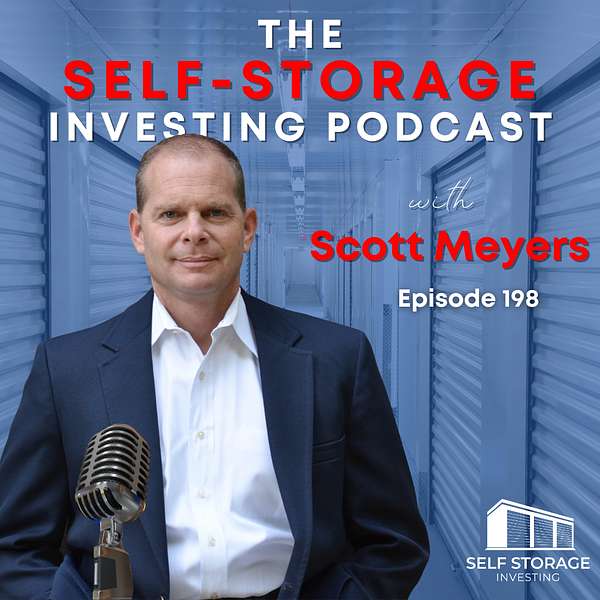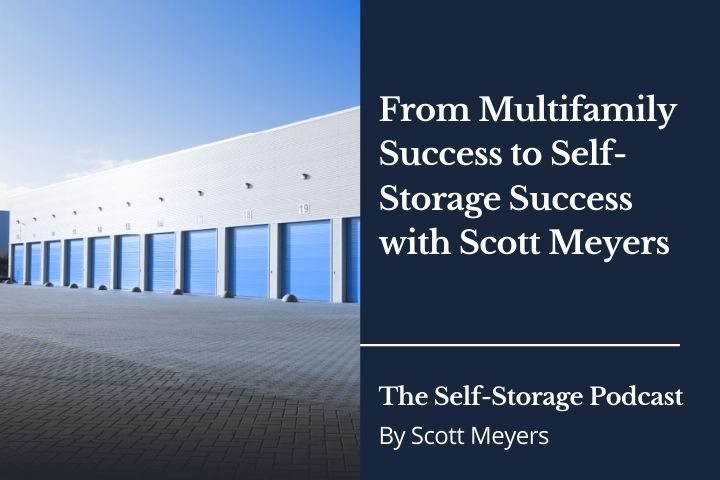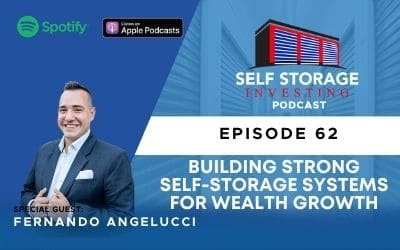How do you get inside a banker’s mind to secure a loan for self-storage facilities?
Scott breaks down the intricate dance of lending and the steps borrowers must take to improve their chances of loan approval. He dives into how the current economic climate—elections, inflation, and fluctuating interest rates—affects loan applications and approval times.
Scott also explores different lending sources, from community banks to pension funds, and emphasizes the importance of crafting a detailed business plan to win over lenders.
WHAT TO LISTEN FOR
:59 The Impacts of Interest Rates and Elections on Lending
1:55 Why Banks Avoid Saying “No” Directly
6:15 Can You Get Pre-Approved For a Self Storage Loan?
29:49 Final Projections: Why Good Enough Isn’t Good Enough
Leave a positive rating for this podcast with one click
CONNECT WITH US
Website | You Tube | Facebook | X | LinkedIn | Instagram
Follow so you never miss a NEW episode! Leave us an honest rating and review on Apple or Spotify.
Episode Transcript
Big Announcer (00:03):
This is the Self Storage Podcast with the original Self Storage expert, Scott Meyers.
Scott Meyers (00:11):
Hello everyone and welcome back to the Self Storage Podcast. I am your host, Scott Meyers, and in today’s episode, we are going to be covering all things within the realm of the banker’s mindset. We know that well, it’s never easy to get a loan on a commercial piece of real estate whether you’ve been doing this for a number of years or whether you’re starting out fresh. We have some additional challenges facing us in the marketplace right now by way of election coming up, high inflation, some challenges economically that have caused the lenders and our bankers to, as they say in the industry, put their pencils down for a while. That doesn’t mean that all lenders have been, but there are many banks, other forms of lenders that are waiting to see what is going to happen with this election. They’re also looking to see what the feds are going to do with regards to interest rates.
(00:59):
And right now there is a lot of speculation because we’ve had one rate decrease. We’ve had announcements of others. Lenders are trying to understand just exactly what the landscape is going to look like in 2025. For that reason, many of our loan applications are taking a little bit longer than we’ve seen in the past for them to give us an answer one way or another. And that is intentional because as we found, and no offense to any of the lenders that may be listening to this podcast, but we’ve just found in practice that many of the folks that we’re asking you for money from, rather than saying no and the word getting out that they’ve told us no, they would just say no without actually saying it by way of asking for more information or just maybe extending the length of time to get an approval so that knowing that we may fall out of contractor, that the deal may go by the wayside or that we may find another lender.
(01:55):
And again, that is a few folks out there that we’ve run into in the past because let’s face it, they want to be known as a bank, as a lending institution that approves loans and puts loans out on the street, not one that just continually says no, otherwise folks won’t come to them. That is why over the years that we, yes, we absolutely, depending upon the facility that will dictate where we’re going to take this loan application for a particular project if it is in a small town, is in a secondary tertiary market. The community bank savings and loans are one of our go-to sources. But we also, over the years, we’ve sourced a number of insurance companies, pension funds and hedge funds and other large institutional lenders that love the self-storage space that we go to over and over and over again rather than sending out to loan applications to three or four different sources with every project that comes online.
(02:49):
That has just made life a lot easier, and we know that not everybody is at that place, but that’s indeed what we’re going to be talking about today is that the many places as well as the many types of loans that are available in the marketplace of today and how to approach each and every one of them. So I’d like to dive in with a special focus on how to actually qualify for a loan. We’re going to cover the types of loans that are available for self storage, a little bit of deal analysis including banking terminology and other insights that we’ve learned from our lenders, not only in today’s marketplace but over the years where everyone here listening to this podcast, no matter what stage of experience level you are at in your self storage career. So I think one of the biggest questions that people have, especially when they’re starting out is can I even qualify for a loan for self storage?
(03:34):
That just seems like a daunting task and nobody likes to be told no. And so that fear alone keeps people from looking to get into their first step project when they’ve been working in maybe a residential or smaller projects. And it’s important to note that yes, lenders are looking to you the strength of the borrow as much as they are to the strength of the property, but in what ratios and what percentage. Well, the good news is that in income producing properties like a self storage facility, lenders are looking to you to supply 50% of the strength or the repayment of the loan, and they’re then looking at the property to supply the other 50% of the surety in which they’re going to get a repayment of the debt, meaning that the income that the facility produces also has to cover the debt. Now, those are just in terms of percentages regarding the strength of the project or the borrower combined, but ultimately they want to see that the property itself is going to produce at least a 1.25 debt service coverage ratio, which means 1.25 times the amount of NetApp earning income it produces is available to cover the debt on this particular project.
(04:40):
So if it’s a one-to-one ratio, that’s basically a breakeven, and that is not anything that a lender’s going to be interested in. They want to make sure that there’s enough to be able to cover the reserves for anything and everything else into whether the storm and or a lease up on the facility. So the good news is that even if your credit is bruised a little bit not perfect, and you don’t have the amount of liquidity to cover the entire amount of the debt, well, the facility itself is going to contribute to that by way of the fact that it’s an income producing property. And that is one of the reasons why we love commercial real estate is because the power of leverage a loan that allows us to be able to get into a multimillion dollar facility and not have to have all of the cash available and have the loan backed on our balance sheet in the income we produce in a W2.
(05:29):
Otherwise, it gets very difficult for us to buy multiple properties beyond one or two, our single family residence and several rentals without going to some type of a commercial loan or another type of investment vehicle. But with self storage, the individual project produces the income that repays the loan. So it is actually easier to fund a self storage facility than it is to continue down the path of buying multiple single family houses. And I think that again, is a fear that investors have and a misnomer when they actually go out to the marketplace and begin sourcing and looking for properties and then the loans to accompany those. And we’ve had so many people that have come through our academy that would ask, okay, so how do I go about before I begin looking for facilities, how do I go about getting pre-approved for a self storage loan to find out how much I can buy?
(06:15):
Well, the answer is there was no such thing because until you have a project that you can show to the lender the income that it’s producing and the purchase price, you have nothing for them to pre-approve because the facility itself is what is going to dictate whether they say yes or no. So let’s say you’re looking to buy your first self storage facility, that doesn’t mean that you should go out and look for a 10, 15, or 20 million project on your first acquisition. It should be a facility that a lender would look at and say, that’s really not a stretch for you financially and also something that should be not a stretch for you operationally to be able to manage it as well. And so all types of facilities all across the country obviously have different pricing models and valuations, but it seems like most of our students over and over again, they fall into this category where the facility size is roughly 200, 250 units and sweet spot in terms of pricing anywhere from 1.2 million up to about $2 million seems to be the typical constructs of the first facility that our students would acquire after coming through our academy or any of our mentoring programs.
(07:19):
And it’s not necessarily by design. It just seems to be what is the most comfortable for the lenders that they are approaching and our students are finding in the marketplace that they feel comfortable biting off as well. And again, that just depends upon what area of the country that you’re located in and obviously a whole number of other variables as well. But just to give you some type of a frame of reference. So now let’s assume that you’ve found a facility that you’re interested in purchasing, and so at the time that you are negotiating back and forth with a purchase and sale agreement with the seller and or the broker, you’ve already began to identify the lenders in the market. And if there’s already a loan on the facility, we will typically approach, I shouldn’t say typically we will always approach that lender because if they said yes to the project once, they may say yes to it again with you as the borrower.
(08:05):
We’re also going to look at the community banks, the savings and loans in that local market as well along with our preferred lenders, which is the SPA and any of our other traditional sources that may fit into their buy box or their financing box with regards to our pension funds, our life insurance companies and some of the brokers that we use to finance those sources or find those financing sources for us. So you should be prepared at this point to then submit the business plan and loan application, the purchase and sale agreement and all the pertinent information to the lender by way of showing three years of your personal tax returns, which is what they’re going to ask for. They’re going to want to see your personal financial statements, which shows your assets and your liabilities, all of your affiliated debt financials to support your personal financial statement.
(08:50):
They’ll pull a credit report unless you’ve pulled one recently that they can now take a look at. They’re going to want to see copies of your bank statements at least a year if not to two years. And then as I mentioned before, again the business plan. And so this is the time and we’ve stated to our students over and over again that when you start to embark upon this journey, you do need to create your business plan and that means that you have gone through and you’ve identified just exactly how you want to approach the industry and how you want to approach and build this self-storage of business. Because if you’re not treating it like a business and it’s just a hobby, well the lender’s going to see that as well that you haven’t thought this through and that you just hope to be able to find a property and that you hope you get funding for it, and then you just pray that everything’s going to work out with the manager that you hire or is already in place and it’ll be profitable and throw off cash and you can then sell it for a profit afterwards.
(09:41):
Well, if you haven’t carefully crafted a business plan and plotted the path to profitability along the way, not only for yourself to see and to have a template and a business plan to work from, how are you going to be able to portray or tell that story to a lender who’s going to entrust you with a million to $2 million? Well, the answer to that is by having a well-crafted business plan. And so waiting until it is time to submit the loan application and include this business plan along with it. We’re not talking about a two page business plan. We’re talking about the 30 to 40 page business plan which outlines all the details of how you plan to operate your self storage business. So this is something that once you begin to embark upon this journey that you need to craft and you need to build as soon as possible, and again, this as much for you as it is for a lender so that you don’t go off the rails and you stick to your plan as you go out into the marketplace looking for facilities.
(10:35):
So now let’s get into the mindset of the lender. What are the banks looking for? What is this loan officer and the loan committee looking for once they begin to decipher and look at all the information that you have presented to them? Well, first and foremost, they want to see that you have a good track record of borrowing and paying back debt, and that is done by way of looking at your credit report to see hopefully everything is ones and zeros, which means everything is in good order and that you don’t have a late pays. So that’s pretty simple, that one right off the bat as well as your overall credit score to begin with. And most lenders like to see a minimum credit score of around six 50, so don’t hold me to that. You may be getting approved for fantastic rates and terms with loans with a six 50 or five 50 score, or excuse me, a 600 or a five 50 score or some lenders may not look at you until you’re at 700.
(11:22):
I’m seeing generally a minimum credit score of six 50 is going to get you the rates in terms that aren’t going to kill the deal, and it’s going to be something in the realm of what you’re looking for. Banks want to see that you have no bankruptcy judgements or liens against you. None of those bode will in the eyes of a lender. It doesn’t mean that it’s a deal killer if you’ve had a bankruptcy in the past, but what they will look into is whether it is a chapter seven, chapter 11, how long ago was that bankruptcy? And then they’re going to ask for a narrative, which means tell your story what happened here? How did this happen? Was it as much a fault of perhaps a failed real estate transaction or partnership? Was it during the great recession where most boats went out with the tide?
(12:04):
What is the reasoning behind this? And be able to tell that story. And much like your business plan, if you have this in your history, then you should craft that one page to two page narrative of what happened during your bankruptcy so that they can see and understand that, that they’re not taking a risk on you because you just feel like you used the bankruptcy laws to your benefit and just hit the reset button, but that truly, this was something that you tried and you did everything possible to save the business until you just finally couldn’t. They also want to see that you have a stable employment history because yes, as I mentioned that the property is going to be the primary source of repayment for the loan, but if there was a shortfall or if there’s a dry season or in a lease up phase, they want to see that if need be that you have the resources by way of your W2 income or another business to be able to make up for any of those shortfalls and pay for any fees or you truly are a responsible individual, they can hold down a job for a long amount of time because what they are looking to determine is that this is something that is serious and when you commit to something that you see it through and that shows up in your employment history and they’re not looking at a job hopper that goes from one place to the next because maybe they see shiny objects or they really just don’t care too much about longevity and that they, you are looking at this facility and this project as maybe as a hobby or just something that you may have interest in for a while, but then that’s fleeting and a year or two from now that you’ll be doing the same thing that you’ve done with your employment history if it is not so good and that you’re just going to move on.
(13:36):
Lenders also want to see that your household income is at two times that the household debt, in other words, it’s gone called the 50% debt to income ratio. They want to see that the income coming into your household is two times as high as that. The amount of expenses to basically run and keep that household moving, and that doesn’t mean your personal budget, but it means everything that is going to keep your house in place with the insurance, taxes, utilities, everything else. Now outside of that, then your living expenses should be the other 50% of your income, which means your food paying for a close recreation, anything else outside of basically covering the household debt and expenses so that your house does not go back to a bank which would trigger a foreclosure, which then might tumble this loan as well. So now let’s talk about the biggest piece of this project, which is how much cash do I have to put in, how much equity do I have to put into this project?
(14:28):
So most conventional loans from conventional lenders are looking to see about a 35 to 40% in terms of equity or a down payment, which means that to 60 to 65% is going to be the debt or the loan or loan to value the LTV loan SBA loans. The good news is is that the SBA is the small business administration by the way, but one of the additional benefits, one of the many additional benefits of investing in self storage is that the SBA, the Small Business administration, they love self-storage. They understand that it is a business. And so these small business administration has a package that they put together for self storage facilities, meaning the real estate and the business itself, which is the goodwill, which allows for a 90% up to a 90% LTV, which means only 10% equity or a 10% down payment is required.
(15:19):
And libo Bank is the nation’s largest self-storage facility and SBA lender and that we utilize them almost exclusively on our projects that we can and so do our students. We have an incredible working relationship with them and they do give our folks a little bit of preferential treatment by way of coming through our academy and through our mentoring programs. It doesn’t get into any better, right, or any lending terms, but they recognize coming from our organization that you’re going to get to treated just a little bit to differently. And so we will always take our projects to the SBA first into Live Oak to see if this is a facility and a project that they’re interested in, in addition to looking at those conventional lenders and some of our other brokers. But the SBA absolutely has to be a loan package and a lender that you should have on your list when you are shopping for loans for your next project, for your first or your next project.
(16:08):
So whether you’re going the conventional route or the SBA route, what are the acceptable sources that the banks are going to accept in terms of equity? Well, first is obviously cash because they don’t have to look to anywhere else to determine whether that is liquid or not. Cash is the most liquid you can possibly get. They will also accept a seller note, a seller carryback up to 5%, and this is the SBA. Not all lenders are created equal, and so some may accept a little more than that, some may not accept it at all, but the SBA will accept up to 5%, but it must be on standby for 24 months, which means it cannot be paid off within 24 months. The seller has to stay in the deal because the SBA looks at this as an additional assurance that you are going to not only perform for them, but also for this seller, but also the seller has a vested interest to make sure that you perform because they’ve got some equity still tied up in taking back 5% of the ownership of this property on payments back to you.
(17:04):
So they will accept up to 5%, which means on our capital stack, now we only have to come up with that 10% down. Well, it may be less than that because the seller could carry back up 5%. So as you begin to build your project, you should always be asking the seller if they’re interested in staying in the deal and doing a seller carryback or a holdback, they will also accept a heloc, which is an equity line of credit on an investment property or your personal home, your personal residence. That is an acceptable form of cash that can be brought to the closing table for this project. Minority investors can also invest in your project. They can bring cash to the table as well. However, any minority investor that you bring into the project has to only own within the operating agreement 19% or less of the project, they are at 20% or greater.
(17:51):
Then the lender is going to require that they be placed as a guarantor on the loan. That is a stipulation that all lenders require is that if you bring in any type of an equity partner into this project and they have 20% or more ownership of the property, regardless of how much cash they put in, they have to be a guarantor. On the note as well, you can also use and receive gifted funds, however, that has to be accompanied by a notarized gift letter so that somebody shows that this truly was a gift and it’s not something that they deposited in your account that’s going to come back out. You essentially borrowed it from your parents or borrowed it from a friend, and this cash just shows up in your bank account because they’re going to look, remember at your bank accounts and they’re going to look at your statements and find out, well, all of a sudden, well look, $180,000 showed up in your account.
(18:37):
Where did they come from? Oh, well that was a gift from that. Okay, what for? Let see a notarized letter stating that it is a gift. It’s not a loan, it’s not to be repaid at any point by penalty of perjury or anything else. So you can accept a gift as long as somebody’s going to truly give it to you by way of a gift. It could be an inheritance. It doesn’t really matter as long as it’s a company that by a letter so that the bank shows that it’s not going back or having to be repaid back from any other source, including the facility that they want to loan money to you on. So now I want to take a little deeper dive into the key components of a business plan. So as I mentioned, this is not just a one pager, a two pager or something that you have thought about and jotted down on a piece of paper and was only on your radar or even thought of because the lender requested it as they sent you the loan application.
(19:24):
This once again is a living, breathing document for your business that should be crafted by you with a lot of thought consideration and time, a truly well crafted business plan where you sit down and you really think about where it is that you want to go, what you want to achieve in your self storage career that’s going to take you 15, 20, maybe 30 hours to be able to create a well-thought business plan. It depends on how involved and how deep you want to go into the business of self storage, but at the very least, you’re probably going to spend about 10 to 15 hours crafting a business plan, even if you only plan to own one facility to maybe supplement retirement. If you’re looking to go full bora and make this a business, even if it starts out small, but you have aspirations of doing that in the future, then yeah, it’s going to take you 20, 25, 30, 35 hours or so to be able to vet this all out.
(20:08):
The good news is, at least for those that are listening to this podcast, and those have been through our academy and our mentoring programs, we have those in business plan templates that are a part of our programs so that well, it circumvents that so that it significantly shortens the amount of time that it takes for you to be able to create that to by as much as a 50 to 75%. And we have an incredible track record of our students getting approved for their loans by utilizing our business plan and really our approach and of course our lending relationships. We’ve been out there doing this for 20 plus years and all around the country and we have the relationships with the lenders that are lending in self storage and they understand our group and they understand the folks that work alongside of us as well.
(20:48):
So do not hesitate to reach out and to lean on us for the expertise that we carry when it comes to getting approved for a loan. Okay, so what are the key components of a business plan? Well, first of all, it does need to start with a two pager and that’s called the executive summary so that the VP of commercial lending can get an understanding of who you are and in a glimpse and get a snapshot of your experience level and the project overall and what it is that you are seeking. So it’s going to have all of the pertinent information that talks about your business, your intentions for the loan, and make sure to include how much you’re requesting that’s important and how you intend to use the loan proceeds and the ownership structure of the new business. So those two pieces are very important.
(21:29):
So we have a very lengthy and very descriptive sheet called the sources and uses. So in other words, it’s going to give you 1.5 million. What does that include? Is that just the acquisition or is this a lease up or a value add? Which means that I’m asking for these proceeds so that I can not only purchase the facility, but also I need to put new HVAC units or units in, it’s going to need a new roof. I need to update the technology. It includes it’s only 50% occupied so it’s not cash flowing, so I am going to need some funds for lease up some lease up reserves and interest reserves, whatever that looks like. You have to be able to state specifically what is the sources and the uses of these loan proceeds and of course the ownership structure. They want to know is this just you inside of an LLC?
(22:16):
Are there partners? They want to know again, who is going to be guaranteeing the loan? If there’s anybody above 20%, they’re going to have to. And then the sources of the actual funds that you are bringing to the table, your equity piece, then you’re going to launch into your own essentially personal resume, which is who you are. You need to tell them who you are and why you will make a good owner and operator. So even if you’re brand new to self storage and you can’t rely on a track record within the industry, well, you can certainly point to a track record as to why you are a good borrower and why you’re going to be a good owner operator, and this is the time not to boast, but to professionally boast and brag a little bit on yourself. If you’ve achieved some greatness and some success in your W2 job or other businesses you own or businesses you’ve bought and sold for a profit or in your real estate investing career in other asset classes, then this is the time to show any and all experience.
(23:10):
This is your resume and this is the time to be able to point out anything in everything that makes you once again a good borrower and somebody that they want to do business with Now and also in the future, I recommend going so far back as to if you do have some outstanding accomplishments in high school sports, and yes, you may laugh about that, but it shows that from the beginning you were kind of wired to succeed and maybe you are very competitive that you understand the value of good work and putting your head down. You’ve been on the swim team for six years and you are state champion or a third in the state. Well, that requires a lot of reps and that means a lot of lapse with your head down and getting up and showing up over and over again, and that’s the type of tenacity that these folks are looking for, that parlays over into your business career as well.
(23:59):
If you’re an Eagle Scout, it never hurts. List it. Any accomplishments that you would think that you know what, if my mom were here, here’s what she would be saying about me. Now, maybe not all of those comments, but you get the idea. You almost can’t brag too much as long as it’s on the professional side, something that would lend these folks to thinking that you are not a credit risk. Next, you’re going to cover the market and talk about and give market insights as to why you think this project is a fantastic project because of the market that it’s located in. It’s growing at a very fast clip. This facility itself is right in the path of progress. It’s coming outside of the MSA and heading in this direction. All roads are leading down the street and down the state road that this facility is located on, and we have multiple developments around this.
(24:48):
Rates have been steadily increasing in the market at the other self-storage facilities as well as the apartment rates, whatever that looks like in terms of talking to the market itself and what is happening as well as this particular facility and how it fits within the one to three in a five mile trade area. With regards to the supply index, is this an unders supplied market? Hopefully it is. If it’s an oversupplied market, well, is that temporary because there are these other developments coming in and it is in the path of progress. And so yes, all of that is coming in and this site is right in the path of all that progress and is poised that once all these developments take place and that you are going to be very well set and there will still be an undersupply of self storage out once all these other projects are completed, whatever that looks like, the information you can get on your own, there are multiple sources if you look back through our podcast on that market to research and market studies with different softwares and apps and also organizations that will gather that data for you.
(25:48):
And then if you are applying for a loan that has a construction component to it, or if it’s just a ground up development or a conversion with no units being rented right now, well then a feasibility study is going to accompany your loan request of where the consultant is going to go out and assess the market and then tell you just exactly why and if you should be building in this particular area and what the supply looks like now and what the supply will look like once you have completed this and into the future. It will also have a detailed listing of your competitors and where they sit in terms of occupancy. That is information that yes, you can gather as well as from those other data gathering sources. But you also may want to employ the services of a consultant just to go out and do a market study on all your competitors to find out their rates and their occupancy if you don’t either have the time or the ability to gather that information.
(26:36):
And once you have that information, then how is that going to drive your rates and your management plan because all of that is contingent upon where this facility sits within the realm of your competitors and the market itself. Is it an oversupplied market? An UNDERSUPPLIED market? Again, how do you plan to manage your rates to be able to achieve not only full occupancy at stabilization, but also rates that are up at the higher end of the market in comparison to, and we’re in conjunction with your competition. Now once you have all of that data, then we’re going to move into the financial forecast, which is your projections or the proforma with some assumptions once you take over the business. So it’s going to have your full-blown underwriting analysis. And this is through any one of the number of sources out there. Obviously we recommend the self storage evaluator.
(27:24):
It is the most widely used forecasting tool in self storage. We have two versions, an online version as well as a standalone Excel, which is going to give you all those calculations. We have over 150 different calculations that built into our underwriting model. Not that you need all of those or would you present all of those to a lender, but the format and the tool itself is a resource allows you to be able to input all the data and to leave no i’s dotted and no t uncrossed and allows them to be able to manipulate and take a look at any number of the financial calculations that they’re going to want to see. Obviously as we mentioned, debt service coverage ratio, they’re going to want to see that your projections with regards to rate increases, rent increases are in line with what the market has seen historically and as well as a realistic increase in operating expenses.
(28:15):
They want to see that you’ve accounted for insurance properly at today’s rates and what you are going to see as you own the facility as well as property taxes, are those going to go up and have you accounted for those as well? So don’t forget these underwriters at the banks, they have underwritten more deals than any of us, and these are the folks that are going to pick apart your assumptions. So if you think you’re going to pull one over on the commercial loan officer or the VP of a commercial because he wants a commission on another loan, don’t forget that the banks are in the business of saying no first and then yes. And so they’re going to stress test your underwriting and your financials. So it’s best to start with a very solid tool for underwriting. And we’re not just going to do a screenshot of what the seller or the broker has listed in an offering memorandum.
(29:04):
It means that you have put pencil to paper so to speak, that you have put the financials in, accurate financials into an underwriting tool and then you have made solid assumptions based upon your experience up to this level or what you’ve learned. And again, don’t forget, if you do not have experience and you feel like you are behind, we certainly have a number of resources and ways to be able to train you on this, but at the very least, still don’t, do not guess, do not assume that good enough is good enough because you may be way off in some category or number that you weren’t even aware of. It would be best to have somebody come alongside of you and even to hire a third party to perform the underwriting and the financial analysis for you to then turn into the lender. Because remember, you’ve only got one shot at this.
(29:49):
You can’t receive bad feedback from the lender to say, yeah, we’re really not interested in this project because we just noticed that the disservice coverage ratio is low and based upon your projections, we just don’t see this thing performing much better than where it is right now. And you say, well, let me go tweak the numbers and make it look better. Now, what area specifically would you like to see improved? I mean, it’s too late. It’s too late by that point, you have to put your best foot forward, but your best foot forward just means that it’s going to be a solid piece of underwriting because the underwriting is going to dictate whether you should move forward with this project or not and whether they’re going to fund it. And so by the way, if the underwriting doesn’t support moving forward with the project, well then you have your answer to begin with anyways.
(30:29):
You’re not going to still try to squeeze those square peg into a round hole. And then the next biggest piece to this is what are the day-to-day operations and marketing look like? You have to have a plan for that as well. And so this is one of the lengthier portions of the business plan because once you have purchased your facility where the rubber meets the road is now who’s going to drive the performance? Who’s going to get up every single day? And then when their feet hit the floor, are they going to be thinking about and executing on how am I going to drive the net operating income at this facility? And so that has to be articulated very clear to a lender so that they know that somebody is minding the store, but that person or the company that is minding the store is qualified to be able to mine the store and what is their motivation to drive the income up and to drive the expenses down on a day-to-day basis?
(31:15):
Who’s going to manage that asset as a true asset manager, not just a property manager, but an asset manager who’s going to drive the performance of this thing and make it sing so that it does achieve greater heights and grows in value year over year. So when it’s time to either refinance or exit that everybody makes money, first of all, that the lender gets that repaid their capital and then everybody makes a profit because that’s really, that’s all the lender cares about. Remember is the return of capital. They’re not interested in a return on capital because it’s pretty minor. They’re coming in and they’re charging at 7% interest rate, 8%, 5%, 4% depending on the time that you’re listening to this podcast. That’s all they care about, but they need to make sure that this thing is way more profitable than that to ensure that they get a repayment of their loan.
(31:58):
So you have to have a solid plan in place that speaks to how and who is going to manage this facility and manage it well. And the name of the game is truly filling up the units, getting occupancy not only in your facility but also the market in general. So they need to see that in the market research. But then how are you going to get your slice of the pie? What are you going to do to make your facility stand ahead and shoulders above the rest so that when people are looking for storage, they find you hopefully first they see a very solid facility that is a clean, well lit, safe and secure. Those are the things that people are looking for in that order. And then you have the appropriate specials that are on a rotating basis that doesn’t eat into your overall annual revenue, but is enticing enough for people to move in until the rates reset back to street rate while they’re in the facility and occupying that space.
(32:50):
And that involves truly a well thought out marketing plan. And if this is your first go around, then that should be done by a third party company, not yourself because guessing does not help when it comes to the first month of performance that the bank is looking for you to be able to increase the performance of this facility. And if you fall flat, not only do you have to make up for that month, but now you’ve got numbers coming ahead of you for month number two, and once you get behind it is very difficult to get caught back up again. So a solid marketing plan that is going to be carried out by solid operators and executed upon has to be not only spelled out in your business plan, but then it also has to be well executed once you own the facility from day one.
(33:30):
So what you’re going to submit along with your business plan and to the lender are items from the seller because they’ve owned this facility, they have the history of it, and so they’re going to want to see three years of tax returns. And that means typically the Schedule E from the seller, if they’ve held this in an LLC in a separate entity and run a separate set of books or p and ls, it should be listed on a schedule in terms of their tax returns at least. Hopefully that’s the case. If not, you’re going to have to parse it up, but we need to see three years tax returns, and that is something that we ask for in our due diligence items and in the purchase and sale agreement. And so the seller has to give you those documents in order for you to qualify for the loan and also for you to do your own due diligence.
(34:07):
We also want to see a current profit and loss. And so that’s going to be year to date to p and l statement just to see where not only historically, but now to see where it’s operating today, I’m going to see the rent roll, the current rent roll, and I want to see the management summary report, the property management summary report, which is going to tell me, give me a snapshot into the other KPIs or key performance indicators as to how the facility is performing and how it’s outperforming today. So all of those are going to be again, for our due diligence and then also for the lender to due diligence on our behalf. And don’t forget, it’s important to note that we have the benefit of submitting all these documents to the lender. They’re doing underwriting and financial analysis on this. And so that is to our benefit.
(34:48):
We have another consultant who is free and they are free until we pay for the loan in terms of a loan fee. And when we close on it, that is vetting this deal for us alongside of us as well. It doesn’t mean that you don’t do your own and that you don’t hire other folks to be able to help you in those areas that we just discussed. It just means that there’s an extra set of eyeballs that is stress testing this facility to make sure that there’s a loan repayment and then a profit at the end for you. So they’re going to verify the rent roll, dig into the various sizes and rates to see when was the last time that they had a rate to increase. You had mentioned in your performa and you’re showing a rent increase, but it looks like they’ve already been aggressively raising rates and it looks like they’re already at the top of the market or vice versa, that you’ve shown that the rental rates for all the 10 by tens are here and the actual rental role is at this location, but it’s been three or four or five years since they’ve raised rates on all of their 10 by tens.
(35:39):
And there’s some of these folks down here that have these legacy clients that have been in here for 15 years and they’ve never had a rate increase. So it looks like there’s more horsepower, and part of your plan should be to go through the rent roll and forensically increase rates, rates by the individual renters. They’re also going to look into how people pay for rent. Are they accepting cash here at this facility? Well, that’s another conversation, but we need to verify from the bank statements that what is shown on the rent roll and that the amount of rent coming into this facility is actually hitting the bank account. So that is another key piece as we get into the due diligence that the lender’s going to want to see and you are going to want to see as well. And then what is the percentage of folks that do pay in cash versus an A CH or pay by check, and are those some trends that we want to change once we have ownership of the facility?
(36:26):
What does their accounts receivable look like? We try to manage as much as possible in all our markets and all our facilities to 5% of our rent outstanding beyond 30 days. So our AR is plus five, 5% over 30. And anytime that we were managing within that, if we only have a 4%, 3%, that’s our cost for celebration. If we begin to get over that, especially some of our facilities due to the demographic on the markets, they hover around that eight to 10% delinquency. And as much as we try, sometimes you just have to accept that within a certain demographic and a certain market in which your facility is located. But how do we account for that? Well, we account for it in our underwriting to just know that here’s the amount of rent roll that we carry each and every month, but just know that beyond 30 days, there’s about eight to 10% of that that is not going to come in.
(37:09):
The lender’s going to flag that, and you should be aware of that as well by looking at the property management summary report to see historically what the aged receivables looks like. We also want to look at the tenant protection penetration or the insurance. So we get a fee, we get a cut of the tenant protection programs that we put in place to cover the renters. It’s like renter’s insurance, however you want to look at it, whether it be renter’s insurance, tenant protection, different coverage plans. We get a portion of the monthly fees or premiums that our tenants are paying for that. So we want to see if the seller has a program in place already where they’re receiving that or if this is truly just a gravy and an upside that we are going to be able to participate in. And if there’s any tenant protection plan at all.
(37:56):
We also want to look to see if the seller has a tenant insurance, renter’s insurance, a tenant protection plan in place, and if so, how much are they receiving with regards to the premiums, the monthly premiums, are they getting back? Because all of these programs have the ability for the owner of the facility to be able to receive a portion of that back, but do they have it in place already and how much are they receiving back? And what is the penetration of these programs? Is it 30% of the folks have taken this 40 50? We mandate the fact that anybody that comes into our facilities and is going to rent a unit from us, they have to either show proof of insurance from their homeowner’s policy or a separate rider that covers their goods at this facility, or we offer them whatever it is that we’re offering at that facility in terms of insurance or a tenant protection plan.
(38:43):
But they have to show proof of insurance one way or another. Either you bring your own or we have to see that you’ve signed up for this. And oh, by the way, you can do this here on the spot before they can move into our unit. So before they can move into their unit in our facility, that is just mandated across all our facilities. And I strongly recommend that you adhere to that policy as well because it just saves a whole lot of headaches in the long run when somebody does have an issue by way of getting any damage by way of maybe a leaky roof. Or worse, if we have a weather event or if by chance something comes up lost or stolen, we don’t want to have that conversation with them and neither do our managers. But also that is a significant amount of dollars that goes directly down to the bottom line that increases not only your cashflow, but obviously the value of the facility as well.
(39:26):
And then I want to look to occupancy trends. Is it up and down? Is it linear and up and to the right to increasing? Is there seasonality? Is it in a college town? Is it in a military town? Has there been a significant drop? For some reason, we’ve seen this in a facility one time many, many years ago where there was a break-in to four or five units at the facility. We saw a immediate drop in occupancy, and that’s because it hit in this very small town, it hit the local newspapers. And then there was an exodus by many of the other clients, the other tenants that were in the facility. And so we just want to look to see if there’s any anomalies, any spikes, which is good. What did you do here to drive occupancy to any valleys or dips? What happened here?
(40:07):
And is this common over the course of two or three years? That’s why we want to go back and look at the historical occupancy so that we can account for that. So now that we have this data, as we begin to pour over the information that we’re receiving from the seller and or the broker, it’s time to go back to the seller and verify some of this information. And so that’s what we’re going to do in this two-part episode of how to Submit Your Business Plan and Loan Request to a Lender to get into the Banker’s Mindset. Very important topic in the marketplace, and a lot of discussion in our mastermind that just wrapped up last week. And so we’re going to do a two-parter on this one. And in the next episode, we’re going to talk about the questions to take back to the seller to verify, as well as then the types of loan programs that are available in the marketplace right now, and which ones are our favorite that we’ve been utilizing and getting a lot of success from. So with that, this is Scott Meyers signing off from the Self-Storage Podcast. Look forward to seeing you on the next episode. Take care everyone.
Big Announcer (41:05):
Hey gang, wait three things before you leave. First, don’t forget to follow the Self Storage Podcast and turn on your notifications so you never miss another episode. And while you’re there, please leave us a five star review if you like the show. Second, be sure to share your favorite episodes and more via Instagram, and don’t forget to tag us. And lastly, head to the links in the show description and hit follow on Twitter and Facebook to get a front row seat with the original Self Storage expert, Scott Meyers.
















